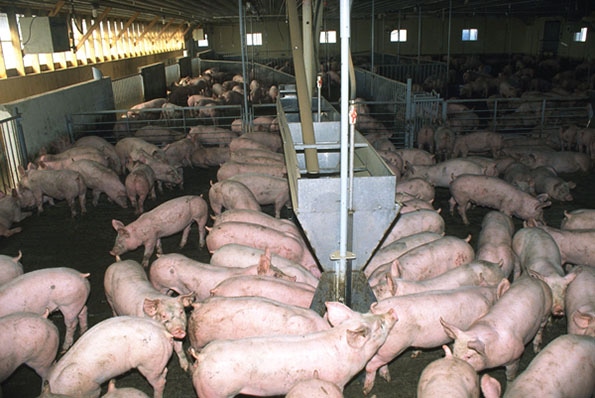Researchers at five universities are conducting parallel studies to see if current floor space allowances for finishing hogs should be updated due to hogs being raised to heavier weights.
July 21, 2016

Current floor space allowances for growing-finishing pigs were determined in research studies conducted 10 to 20 years ago using pigs that were marketed at a body weight of no more than 250 pounds. Currently, pork producers regularly market pigs that weigh over 280 pounds and often weigh 300 pounds.
Given this precipitous increase in market weight, an obvious question is: “Do the old floor space allowances still apply for modern production scenarios?” The Minnesota Pork Board has provided checkoff funds to help answer this question in a series of two studies.
In the first study, pigs are housed in pens that provide 7.6, 8.6, 9.6, 10.6, or 11.6 square feet of floor space per pig from about 50 pounds bodyweight until pigs within a pen average 300 pounds bodyweight. These floor space allowances are achieved by changing pen size and maintaining a consistent number of pigs per pen across floor space treatments. A consistent number of pigs per pen ensures that differences in pig performance are not caused by differences in group size which can cause different social structures of pigs within a pen.
In this study, we are measuring daily weight gain, daily feed consumption, gain efficiency, incidence of injuries, morbidity and mortality. In addition, we are collecting saliva samples from pigs in all pens when pigs weigh 175 pounds and during the last two weeks of the experiment. We will measure concentrations of the hormone, cortisol, in the saliva as a way to characterize the level of chronic stress being experienced by pigs.
In the second study, we are focusing on pigs at the end of the growing-finishing period. In this study, we are beginning with pigs that weigh 290 pounds, and are assigning them to floor space treatments identical to the first experiment. After a one-week acclimation period, we are measuring pig performance over the following two weeks. This study allows us to understand the space requirements of very heavy pigs without influences from the early growing period.
These studies are being conducted as part of a regional project being led by the University of Minnesota. Five universities (University of Minnesota, Ohio State University, Michigan State University, University of Missouri and Kansas State University) are conducting both experiments under a common protocol. This approach allows greater replication of results and will provide greater confidence in the findings. We expect to complete this project by February.
Lee Johnston is a professor at the University of Minnesota West Central Research and Outreach Center at Morris, and Sarah Schieck is a University of Minnesota Extension educator at the Regional Extension Office in Willmar.
This article originally appeared in the Pork Checkoff Report by the Minnesota Pork Board.
You May Also Like



